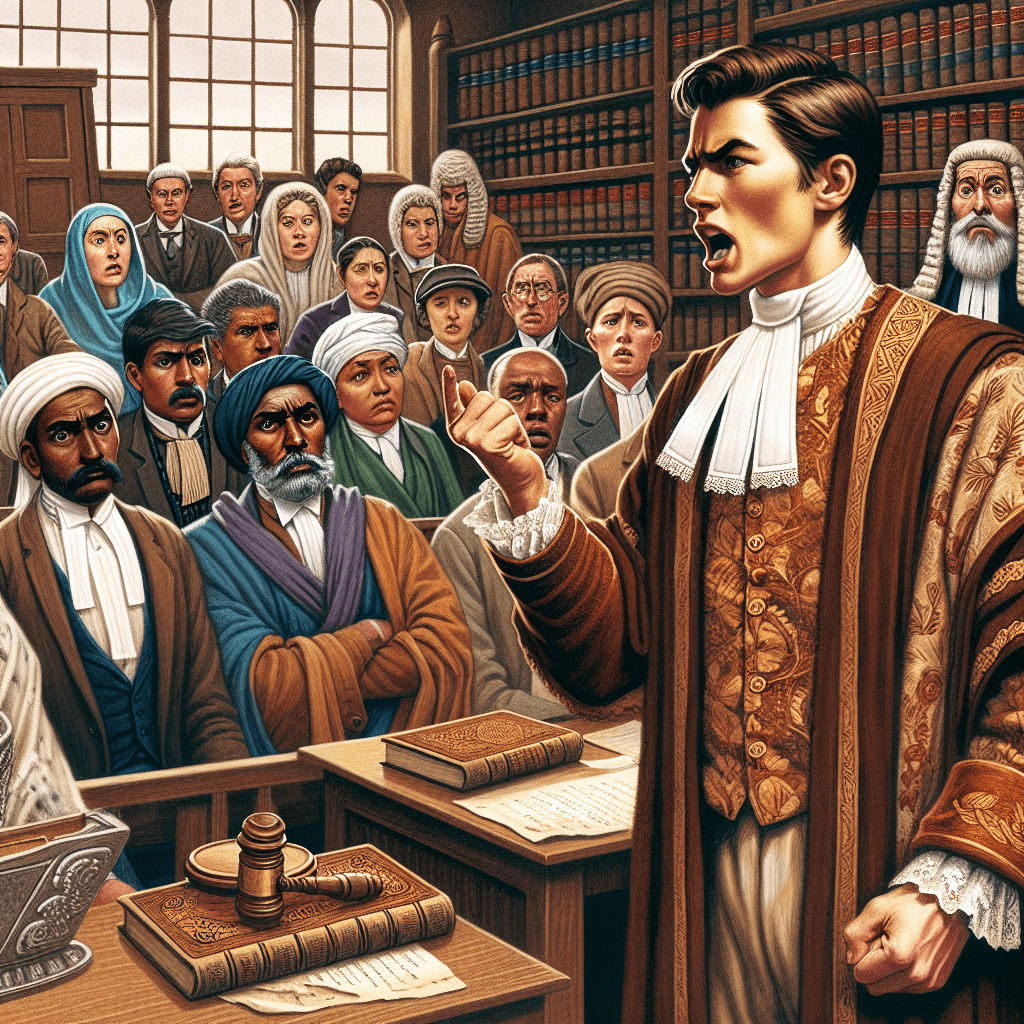What bizarre legal loophole allowed a man to demand a trial by combat in 19th-century Britain
In an age of steam engines and industry, a man accused of murder stunned a British court by invoking a forgotten medieval law that allowed him to demand a fight to the death instead of a trial by jury.


Too Long; Didn't Read
TLDR: In 1818, a man accused of murder realized the medieval law allowing trial by combat had never been officially abolished. He legally demanded it, his weaker accuser refused to fight, and he walked free. Parliament then promptly scrapped the ancient law for good.
Blog Post Title: Throwing Down the Gauntlet: What Bizarre Legal Loophole Allowed a Man to Demand a Trial by Combat in 19th-Century Britain?
Introduction
Imagine a courtroom in 19th-century London. The air is thick with tension as a man accused of a brutal murder stands before the judges. But instead of pleading his case, he throws a leather glove to the floor and, in a clear voice, demands his ancient right to trial by combat. This isn't a scene from a fantasy novel; it’s exactly what happened in 1818, sending shockwaves through the British legal establishment. The defendant, Abraham Thornton, exploited a legal relic that most believed had vanished with the Middle Ages. This post delves into the shocking murder case and the bizarre legal loophole that allowed an accused man to demand a duel to the death, forcing Parliament to slam the door on one of history's strangest laws.
Main Content
## A Shocking Crime and a Controversial Acquittal
The story begins in May 1817 with the tragic death of a young woman named Mary Ashford in the English village of Erdington. She was found drowned in a pit, and the evidence, though circumstantial, pointed to a local bricklayer, Abraham Thornton. He had been seen with Mary late into the night, and his footprints were found near the scene.
Thornton was arrested and put on trial for murder and rape. Public opinion was fiercely against him. However, his defence team successfully created reasonable doubt, arguing that the evidence was not conclusive. To the shock and outrage of the community, the jury found him not guilty. For most, that would have been the end of the matter. But Mary Ashford’s family was not finished.
## The Ancient Right: The "Appeal of Murder"
Mary’s brother, William Ashford, refused to accept the verdict. He invoked an archaic legal process known as the "appeal of murder." This was a peculiar feature of English common law, distinct from a standard prosecution by the Crown.
- A Private Prosecution: An appeal of murder allowed the next of kin of a murder victim to bring a private prosecution against the person they believed was guilty.
- Double Jeopardy Exception: Crucially, it was not subject to the principle of double jeopardy. This meant that even if a defendant had already been acquitted in a criminal trial, they could be forced to stand trial for the same crime all over again.
William Ashford launched his appeal, and Abraham Thornton was arrested once more, facing a second trial for the murder of Mary Ashford.
## The Loophole Unearthed: Wager of Battle
Facing a new trial where the outcome was far from certain, Thornton and his clever legal counsel delved deep into the history of English law. They discovered a shocking and long-forgotten provision tied directly to the appeal of murder. If a defendant was challenged via a private appeal, they had the right to respond in one of two ways: they could submit to a trial by jury, or they could choose "wager of battle," more commonly known as trial by combat.
This Norman custom was based on the belief that God would not allow the guilty party to triumph. The loophole was simple yet profound: while trial by combat had not been used since the 16th century, the law had never been officially abolished by Parliament. It remained a dormant, but technically valid, legal right.
When Thornton appeared in the Court of King's Bench in London, he formally issued the challenge. He declared, "Not guilty; and I am ready to defend the same with my body." He then threw down a gauntlet—a formal leather glove—as was the custom.
## The Court's Dilemma and Parliament's Response
The judges were utterly astonished. They were modern jurists forced to contend with a medieval law. After months of legal arguments, Lord Chief Justice Ellenborough had to concede that the law, however obsolete and barbaric, was still on the books. The right to wager of battle was Thornton's to claim.
This left William Ashford in an impossible position. He was a slight man, no physical match for the powerfully built Thornton. Accepting the challenge would be suicide. Advised by his lawyers that he had no chance of winning a physical fight, Ashford declined to proceed. Under the ancient rules of combat, if the accuser refused the challenge, the accused had to be set free. Abraham Thornton walked out of court a free man for the second and final time.
Conclusion
The case of Ashford v Thornton was a bizarre collision of the industrial age and the medieval world. It exposed how centuries-old laws could lie dormant within a legal system, only to be resurrected with shocking consequences. The public outcry and judicial embarrassment were so immense that Parliament was spurred into immediate action. In 1819, they passed the Appeal of Murder, etc. Act, a piece of legislation that formally abolished both the private appeal of murder and, with it, the wager of battle. Thornton’s audacious legal gamble may have secured his freedom, but it also forced the British legal system to finally close the book on trial by combat, ensuring that justice would be sought in the courtroom, not on the dueling field.
More Articles

Why do movie punches sound so much crunchier and louder than real ones?
That sickening, bone-crunching punch you hear in the movies is a lie, and the secret ingredient is probably sitting in your refrigerator right now.

What makes a beer bottle suddenly foam over just from a light tap on top?
It’s not magic, it’s a shockwave; discover the explosive physics that turns a gentle tap on your beer bottle into an instant foamy geyser.

Why do police officers touch the back of a car during a traffic stop?
It’s not a random habit; that simple touch is a calculated, old-school tactic designed to leave a crucial and potentially life-saving piece of evidence behind.